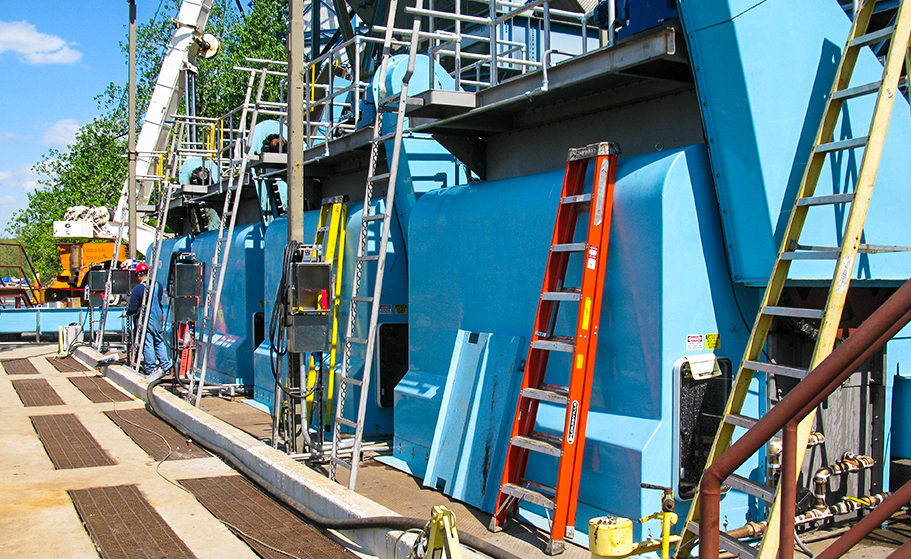
The Clean Water Act (CWA) of 1972 is a piece of legislation that regulates the discharge of pollutants into U.S. waters while setting water surface quality standards. Section 316(b) of the CWA directs the Environmental Protection Agency (EPA) to regulate the design and operation of water intake structures used in thousands of industrial facilities across the U.S.
As per the EPA website:
Section 316(b) of the Clean Water Act requires EPA to issue regulations on the design and operation of intake structures, in order to minimize adverse impacts.
Fish handling screens help to mitigate damage to local aquatic life through their innovative design and ability to allow aquatic life to safely bypass the dangerous parts of a water intake system.
Read on to learn more about the significance of 316(b) and how your facility can become compliant with the regulations.
*Important note: This blog post is meant to be a general guide and is not intended to provide legal advice.
The Importance of Section 316(b)
Power plants, manufacturing facilities, and paper mills are just a few examples of the many industries that use large volumes of local water in their daily operations. The intake of that much water can negatively impact local aquatic wildlife.
Fish, crustaceans, and even freshwater mammals can get pulled into the cooling system of these plants. These organisms will get injured or killed by the high-pressure sprays of water, heat, or chemicals used to clean the cooling system.
Many of these facilities utilize water screens to prevent large debris, such as tree branches or man-made garbage, from entering the cooling system and causing damage. Fish and marine mammals can get trapped against this screen and perish.
316(b) requires power plants and other businesses that intake more than 2 million gallons of water daily to utilize a cooling water intake structure design that minimizes the adverse impacts upon local marine life.
Watch this Explainer Video to learn more about 316(b).
How to Become 316(b) Compliant
There is a multi-step process you’ll need to follow to ensure 316(b) compliance. The steps are as follows:
Step 1: Determine Applicability
The first step you need to take is to determine if your facility and water intake system are subject to 316(b). Generally speaking, if you withdraw more than 2 million gallons of water daily, and 25% of it for cooling purposes, 316(b) applies to your facility.
In 2014, the EPA released a document that provides a detailed explanation, including potential cases for an exemption to the rule. However, it’s strongly recommended that you consult with your legal counsel to determine if 316(b) applies to your facility.
Step 2: Assess Your Existing Conditions
If you’ve determined that 316(b) applies, the next step is to assess the existing conditions of your water cooling structures. You’ll need to evaluate and determine the following:
- Type of intake structure used
- Size of structure
- Location of structure
- The volume of water withdrawn
- The velocity of water withdrawn
- Potential impacts your intake structure has on local aquatic life in the surrounding area
Once you’ve collected that information, you can now develop a compliance plan.
Step 3: Create a Compliance Plan
Using the information you collected in step 2, develop a compliance plan that identifies the Best Technology Available (BTA) for minimizing adverse impacts upon local aquatic life.
You should base your BTA determination upon the location of your intake structure, the size of your facility, and local water body characteristics. Your plan should include a monitoring and reporting program to ensure you’ve implemented the BTA effectively.
Step 4: Implement the Compliance Plan
Implementing your compliance plan can involve a wide range of activities, such as modifying existing structures or adding new ones. Modified Ristroph Fish Handling Traveling Water Screens will help to mitigate the impact on aquatic life. They are lab and field-proven and represent “Best Technology Available” as mandated by 316(b).
You might also need to make operational changes, such as seasonal shutdowns or reducing water intake rates during sensitive times of the year (e.g., during fish migration or spawning seasons).
Success will depend highly upon working closely with your operations and engineering teams to ensure you’ve effectively implemented the compliance plan.
Step 5: Monitor and Report
The last step on the road to 316(b) compliance is establishing a monitoring and reporting program to ensure that you’ve effectively implemented the BTA. You will need to collect and analyze data on water intake, discharge, and any impacts on aquatic life. The data you collect must be regularly reviewed and reported to the appropriate regulatory agencies.
The Ins and Outs of Intakes and 316(b) Compliance
Learn more about intakes through this podcast panel of 316(b) compliance experts from Atlas-SSI, which includes Ford Wall, VP of Sales, John Catt, Engineering Manager, and Henry Schilling, Sales, and Senior Design Manager.
Let Atlas-SSI Can Help You Through the 316(b) Compliance Process
Atlas-SSI has over 30 years of experience helping power plants and other facilities become 316(b) compliant through our fish screens. Our Modified Ristroph Fish Handling Traveling Water Screens are currently in use across the U.S. in Thru Flow and Dual Flow designs.
We utilize a real-time automation system that looks at actual screen operating conditions, including screen speeds, seasonal events, and differential pressures. Our fish-handling baskets represent the Best Technology Available and offer rugged, heavy-duty reliability combined with superior debris removal and discharge capabilities.
Click below to learn more about our fish handling baskets and how our 316(b) experts can help you through the compliance process.
